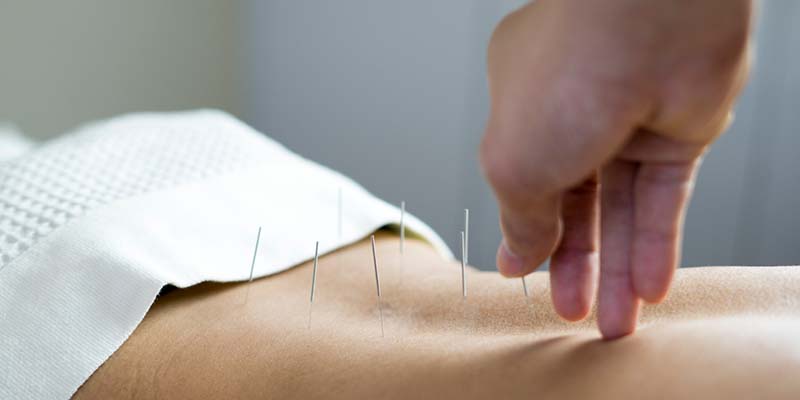Acupuncture Safe and Effective for Chronic Low Back Pain in Older Adults
Stories - September 29, 2025

 Lynn L. DeBar, PhD, MPH
Lynn L. DeBar, PhD, MPH
More than a third of U.S. adults age 65 or older experience chronic low back pain, with treatments costing more than $134 billion annually.
Now, a new study led by Kaiser Permanente researchers has found that acupuncture is an effective and safe treatment for older adults with chronic low back pain. The study, published in JAMA Network Open, found that acupuncture provided greater improvements in pain-related physical limitations than usual medical care alone.
“Of the different treatments we have for chronic low back pain, most have a somewhat modest effect. They often reduce pain by about a third at best and can help people function better,” said lead author Lynn DeBar, PhD, a distinguished investigator at the Kaiser Permanente Center for Health Research. “Our clinical results suggest that acupuncture is working as well as many things that are more familiar to people. We found that the size of this effect, while modest, was positive and sustained.”
What do we know already?
Chronic low back pain — pain lasting 3 months or longer — is common as people get older, affecting one-third of older adults in the U.S. Treatment options include pain medications, injections, and physical therapy, as well as alternative treatments such as acupuncture, which involves inserting fine needles into the skin at specific points in the body.
Earlier studies have found that acupuncture is a safe and effective treatment for adults with chronic low back pain, and it is recommended as a first-line option by the American College of Physicians. However, no large-scale randomized controlled trials have looked at this treatment specifically for adults ages 65 and older. Acupuncture is a promising, low-risk option for this age group, as older adults have a higher risk of adverse effects from pain medications and other common treatments. Acupuncture is also eligible for Medicare coverage.
What did the new study find?
The new trial, called BackInAction, included 800 men and women ages 65 and older with a medical history of chronic low back pain. All participants had health insurance coverage and were allowed to receive usual medical care for back pain during the study (for example, pain medication and physical therapy). The researchers randomly divided the participants into three groups.
- One group received no additional treatment beyond their usual care.
- A second group received up to 15 acupuncture treatments over 3 months (standard acupuncture treatment)
- A third group received standard acupuncture treatment plus an additional 6 treatments (maintenance sessions) over the following 3 months.
At three study milestones — 3, 6, and 12 months after enrollment — participants assessed their own pain and physical limitations. This included responding to a questionnaire that produced a disability score. The researchers also used additional tools for insights into pain levels, degree of physical functioning, depression, and anxiety.
At the 6-month and 12-month assessments, both groups who received acupuncture had greater reductions in pain-related disability than those who received usual medical care alone. The acupuncture-treated groups also had reduced pain intensity and greater physical function after 6 months compared to participants receiving usual care alone. The researchers also reported that acupuncture treatment was associated with fewer anxiety symptoms compared to usual care alone at the 6- and 12-month assessments.
“What sets the BackInAction study apart is that it focused specifically on adults 65 years of age and older, and it was pragmatically designed,” DeBar said. “We worked hard to involve adults in multiple regions of the country so that participant demographics were consistent with the U.S. census for older adults — and we worked with licensed acupuncturists in the community, who are most likely to deliver these services.”
In addition to finding that acupuncture was an effective treatment for older adults with chronic low back pain, the study also confirmed that it was safe.
“We saw very little in the way of adverse effects during the clinical trial,” said co-lead researcher Andrea Cook, PhD, a senior biostatistics investigator at Kaiser Permanente Washington Health Research Institute (KPWHRI). “Older adults often are dealing with other medical problems in addition to back pain. Acupuncture offers a less invasive option that has a better safety profile than a lot of the common treatments for back pain in older adults.”
This work was supported by NIH’s Helping to End Addiction Long-term (HEAL) Initiative administered by the National Center for Complementary and Integrative Health (NCCIH) with additional scientific support from the National Institute of Aging (NIA).
This story was adapted from a news story by the KP Washington Health Research Institute.